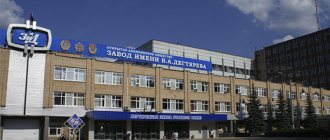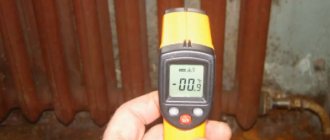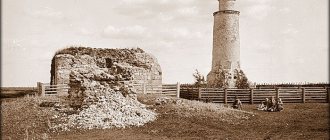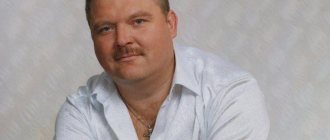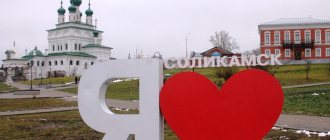Kovrov is a small town in the Vladimir region, located on the coast of the Klyazma River.
The first settlement, which became the predecessor of modern Kovrov, was founded by decree of Prince Yuri Dolgoruky in the 12th century and was called Elifanovka.
Later, Prince Andrei Bogolyubsky renamed the place the village of Rozhdestvenskoye and built a railway there. In the 16th century, the estate came into the possession of the Kovrov family and received its name.
Thanks to the developed railway, Kovrov's economy began to grow rapidly. During the war, various weapons were produced here. In 2011, Kovrov was ranked among the cities of military glory.
The most interesting places in the Vladimir region on the way to and around Kovrov
Historical sites and museums
Kovrov Historical and Memorial Museum
Address: st. Abelmana, 20 Phone: +7 49232 2‑19-25, +7 49232 2‑27-51 Website: kovrov-museum.ru Opening hours: Tue, Wed 10:00-17:00; Thu 12:00-19:00; Fri 10:00-17:00; Sat, Sun 11:00-17:00 Cost: 50 rub. for adults, 30 rub. for schoolchildren, 40 rub. for pensioners
The museum was founded on March 27, 1927. The names of the first directors have not reached our times. Employees of the institution have more than once taken part in archaeological research related to museum activities.
The halls house various historical exhibitions. Here you can see what the city was like in the 19th-20th centuries, examine its images on old postcards and printed publications. In addition, there are exhibits dedicated to animals and plants that lived on earth millions of years ago.
Museum of Nature and Ethnography
Address: st. Fedorova, 6 Phone: +7 49232 2‑21-19, +7 49232 2‑27-07 Website: kovrov-museum.ru Opening hours: Tue, Wed 10:00-17:00; Thu 12:00-19:00; Fri 10:00-17:00; Sat, Sun 11:00-17:00 Cost: 50 rub.
The museum was opened in November 2014. It was located in the building of the ancient estate of the former Kovrov merchants Bolshakovs. The building is famous for the fact that in the period 1918-1931 the family of V. G. Fedorov, who created the world’s first machine gun, lived in it.
The museum halls display a rich collection of wild birds and animals found in the Vladimir region. Here you can get to know the nature and wildlife of this region better.
The museum also houses the “World of Clay Toys” exhibition, which received a grant from the President of the Russian Federation in 2006.
In addition, here you can attend various master classes and interactive activities for children.
Fedorovsky Estate
Address: st. Abelmana, 86 Phone: 7 49232 2‑28-25, 7 49232 2‑18-10 Website: kovcrb.ru Opening hours: Tue-Sat 10:00-18:00; Sun 11:00-16:00 Cost: free
The museum got its name from the former owner of the building. Once upon a time, the Fedorovskys were among the first rich people of Kovrov, and the house was one of the best in the city. Their family was famous for its huge library, part of which was included in the collections of various museums.
The library consisted of about several thousand volumes of both Russian and foreign classical publications. In 1918, hundreds of books were sold out, and some of them disappeared forever.
Currently, the Fedorovsky estate houses the halls of the city library of the Kovrov district.
Museum of Degtyarev V.A.
Address: st. Degtyareva, 6A Opening hours: Tue, Wed, Fri 10:00-17:00; Thu 12:00-19:00; Sat, Sun 11:00-17:00 Phone: 7 (49232) 2-27-07 Website: www.kovrov-museum.ru Cost: 50 rubles
The museum is located on one of the central streets of the city, named after V. A. Degtyarev, a famous gunsmith.
The architects restored several rooms: a living room, a dining room, an office and a workshop. All things are located in the same places as during the life of the owner. These are photographs of loved ones, old books and magazines.
The basement once housed the craftsman's work area. Now there is a foot-operated lathe for working with wood. A small garden has been preserved on the territory of the house, in which V. A. Degtyarev spent his free time.
Shopping arcades of the 19th century.
Address: st. Pershutova, 16A Opening hours: Mon-Sun, 10:00-19:00
The massive shopping arcade building was built in the period 1892-1893. For buildings of this type and purpose, it was very large. This is due to the fact that at the end of the 19th century the city experienced an unprecedented rise in population, which increased by 2 thousand people.
The building housed a local printing house for a long time. After reconstruction in 2011, it became a so-called “incubator” for local entrepreneurs. That is why the premises were equipped with special furniture and necessary equipment.
Hare Museum
Address: st. Griboyedova, 117 Phone: +7 49232 5‑59-10 Website: hare-museum.narod.ru Opening hours: Mon-Wed 9:30-18:00; Thu 11:30-20:00; Fri, Sun 9:30-18:00 Cost: 100 rubles
The museum's halls display more than 1,000 exhibits: plush, wooden, glass, porcelain and a variety of hares. There are about 200 different copies of books dedicated to long-eared animals alone.
A special room was allocated for the exhibition, but “the hares stubbornly scattered throughout the museum” - among the racks, cabinets and shelves. You can play with almost everyone, so children definitely won’t get bored.
In addition, visitors to the museum will learn many interesting legends. For example, images of hares are found on many icons. And in the distant 6th century, the princess of Ireland, Melangela, founded a church around which hunting these animals was prohibited.
The library on the museum grounds regularly hosts holidays and craft competitions, where you can have a great time with your children.
Mount width
Address: st. Belinsky, 25
The picturesque place, located on a hill, is named after the robber Shirin. Once upon a time, his gang lived in this place, taking money and things from locals and residents and merchants passing by.
They say that Shirin himself hid his wealth somewhere in the area, but placed a curse on the place of the treasure. Therefore, those who find him will receive bad news.
At the beginning of the 19th century, various Bolshevik rallies and strikes were held here. And since the 50s - extreme winter motorcycle racing.
Now Shirina Gora is a place where you can come to relax with your children and spend time in nature.
Carpets in black and white colors.
There are many large and small cities on the ancient land of Vladimir, of which it is rightfully proud. One of them is Kovrov. The city is a hard worker and craftsman, ranking second in size and industrial significance after the regional center, a city famous for its revolutionary traditions, a garden city.
Kovrov is spread out freely on the banks of the beautiful Klyazma, surrounded by water meadows and light birch copses, wide fields and dense pine forests.
The beauty and bounty of nature attracted people here. More than eight centuries ago, the first Slavic settlement arose here. As the legend goes, the fortress town was called Epifanovka, named after the eldest of the prince’s warriors, who were ordered to maintain a guard post here and supply the prince’s court with game, which was found in abundance in the dense forests.
Years have passed. The Church of the Nativity of the Virgin Mary rose on the steep river bank, and from then on the village that grew here began to be called Rozhdestveno. At the beginning of the 16th century, it came into the possession of the Starodub prince Vasily Kovr and received the name Kovrovo, which has since been found in historical documents. With the establishment of the Vladimir governorship in 1778, the village received the title of a district town. In total, the new city of Kovrov had about 600 inhabitants. Until the middle of the 19th century, it developed slowly and was a quiet provincial outback.
A turning point in the history of the city was the construction of the Nizhny Novgorod Railway, which ran through Kovrov. In June 1861, railway workshops opened here, which were destined to bring glory not only to the Vladimir region, but to all of Russia. Kovrov craftsmen created the first Russian passenger and freight cars, which received the highest awards at the St. Petersburg and Moscow industrial exhibitions in the 70s and 80s.
A mechanical calico and weaving factory, an iron foundry, a tannery and a distillery, and a steam mill appeared in the city.
This was the pre-revolutionary Kovrov.
By the beginning of the 20th century, Kovrov had already become one of the most important industrial centers in the European part of Russia. The number of the Kovrov proletariat reached more than 7 thousand people. He was distinguished by class organization and revolutionary consciousness.
The beginning of the strike movement in the city dates back to the 80s of the last century. In the 90s, revolutionary circles appeared in the railway workshops and at the Treumov textile factory, and in 1903 the Kovrov organization of the RSDLP was created, which launched active political activities to prepare the masses for the coming battles with tsarism. The core of the organization were N. E. Lyakhin, G. A. Astashov, I. K. Gunin, A. Ya. Maleev, V. F. Kangin, I. I. Nikonov, E. N. Vasiliev and others.
Former Bazarnaya Street.
The years of the first Russian revolution became a bright page in the history of the city. The workers of the railway workshops were at the forefront of the revolutionary struggle, and its main headquarters was there. The climax was the October general strike, which put forward serious political demands along with economic ones. Mass demonstrations and rallies were organized in the city, and a militant workers' squad was created. M. V. Frunze came to Kovrov from Ivanovo-Voznesensk more than once. And the first Ivanovo-Voznesensk Council of Workers' Commissioners included eleven natives of Kovrov and Kovrov district.
During the days of the December armed uprising in Moscow, the Kovrov organization of the RSDLP sent a delegate train for communication. But in Orekhovo-Zuevo, the worker delegates were shot by the Cossacks. Driver A. Ya. Maleev and blacksmith I. K. Gunin died heroically. When a delegation of Kovrov revolutionaries went to collect the bodies of their entwined comrades, the Cossacks again met them with a hail of bullets. Member of the strike committee V.F. Kangin, workers Sokolov and Talantov were killed.
But the dark years of reaction did not break the spirit of the Kovrov proletariat. The fight against tsarism continued, the ranks of the Bolsheviks grew. The year 1914 was marked by the largest 33-day strike of textile workers at the Treumov factory. The Kovrovites greeted the February Revolution with a demonstration of ten thousand people. In March 1917, the Council of Workers' Deputies was created, the first chairman of which was the Bolshevik, a teacher at a real school, A. N. Barsukov. The Council began its activities with the widespread introduction of an eight-hour working day. The strength of the Council was in supporting the workers. Its support was the Red Guard detachment created in August 1917.
First performances.
By the time of the Great October Revolution, the Soviet already practically owned all the power in the city. He created a military revolutionary committee, which was headed by the fiery Bolshevik-Leninist machine gun factory engineer N. S. Abelman. Soon he became chairman of the Kovrov organization of the RSDLP(b). On his initiative, a detachment of revolutionary-minded soldiers of the 250th reserve regiment and Red Guard workers was sent to help the revolution in Moscow. As part of a combined detachment of two thousand in the Vladimir province under the leadership of M. V. Frunze, they bravely fought the counter-revolution until the red banner rose over the Kremlin.
In January 1918, a united district Council of Workers', Soldiers' and Peasants' Deputies was organized. N. S. Abelman is elected its chairman. The Kovrovites unanimously delegate him to the V All-Russian Congress of Soviets, held in Moscow, where the leader of the city’s Bolsheviks died heroically while suppressing the rebellion of the left Socialist Revolutionaries.
But the Kovrov workers united their ranks even more closely. They devoted all their strength to the fight against counter-revolutionary actions, to the defense and strengthening of Soviet power. The security officers, who were led by T. Pavlovsky in those years, had many military cases to their name. A volunteer detachment of Kovrov communists, Komsomol members and non-party workers, which formed the backbone of the 2nd People's Vladimir Regiment, fought on the fronts of the civil war and especially distinguished itself on the eastern front, during the capture of Kazan. And in the city there was a stubborn, selfless struggle against hunger, cold, and devastation. Railway workshop workers helped restore transport. In 1922, Treumov’s textile factory resumed operation and was named after N. S. Abelman.
N.S. Abelman
In just two years, textile workers reached pre-war production levels. The plant, called by the revolution and created by the strong hands of the Kovrov workers, grew and gained strength, supplying the young Red Army with the world's first machine guns of the V. G. Fedorov system. He, a general of the tsarist army, a talented inventor, an outstanding Russian scientist, who accepted the revolution with his heart and devoted all his strength and knowledge to it, was the initiator of the creation of this plant in Kovrov, the founder of a design bureau and an exemplary workshop, headed by the gifted self-taught craftsman V. A. Degtyarev , whose name later became known throughout the country.
The first five-year plan. The country, which had become a giant construction site, was in dire need of earthmoving machines, and the first domestic excavators were provided to the USSR by the working city of Kovrov.
At the beginning of 1930, the railway workshops were renamed into a mechanical repair plant, whose task was to restore and repair excavators purchased by the country abroad for gold. Our specialists and craftsmen have grown, and the factory team has become stronger in the fight against difficulties. Its first red director was appointed former Bolshevik turner N.N. Shirokov. The common dream was to create the first Soviet excavator. And his birthday was April 21, 1931. “Kovrovets” is the name of the domestic earth-moving machine. The excavator was semi-rotary, rail-mounted, with a bucket capacity of about two cubic meters. The design of the firstborn was gradually improved. During the years of the first five-year plans, the excavator plant produced 1,253 earthmoving machines.
In those years, Kovrov became a real fortress of the industry. The production of the first Soviet mechanical furnaces for power plants under construction was mastered. The Kovrov plant named after Kirkizh began producing the first Bendix-type automobile starters for the Nizhny Novgorod auto giant. From here came domestic universal sharpening machines, which were superior in quality to those previously imported from abroad.
Old floating bridge over the Klyazma
Treumov Factory
But peaceful work was disrupted by the war. The Kovrovites glorified themselves with unfading exploits on the fronts of the Great Patriotic War. The name of Alexei Lopatin, a former worker at an excavator plant and the head of the 13th border outpost on the Western Bug, has become immortal. In the very first hours of the war, the border guards took on a barrage of Nazi attacks. Nothing could break the tenacity of the Soviet soldiers. Only on the 20th day of this unequal struggle, when the heroes died, did the outpost fall silent. Posthumously A.V. Lopatin was awarded the title of Hero of the Soviet Union. Kovrovets Hero of the Soviet Union V. Yastrebov repeated the unprecedented feat of Alexander Matrosov. Heroes of the Soviet Union I.V. Pershutov, A.P. Generalov, V.A. Burmatov, P.K. Rangev, I.S. Nosov, F.G. Konkov and others covered themselves with heroic glory on the fronts of the Great Patriotic War.
Kovrov became a weapons forge for the Red Army. Here, at the Kirkizh plant, the Hero of Socialist Labor, the remarkable gunsmith designer V.A. Degtyarev, created the famous anti-tank rifle, the combat qualities of which received the highest rating from front-line soldiers and greatly helped to repel the onslaught of fascist tanks. V. A. Degtyarev was awarded the USSR State Prize.
AND I. Maleev
V.F. Kangin
At this glorious enterprise, awarded the Order of the Red Banner of Labor in 1942, the movement of Stakhanovites began, whose motto was: “Two hundred percent - no less - this is the wartime norm!” Here, in September 1941, the country's first front-line Komsomol youth brigade was born under the leadership of Zinaida Lazoreva. By the end of November 1941, 65 front-line brigades were already working at the city’s enterprises, which marked the beginning of the patriotic movement of Soviet youth that swept the entire country.
Home front workers helped the front-line soldiers in every way they could. City residents donated 126 million rubles to the defense fund. Part of these funds went to the construction of tank columns “Kovrovsky Komsomolets” and “Ivanovsky Osoaviakhimovets”. On the initiative of the city party committee, the Kovrov Bolshevik armored train was built and armed in a short time. His team was formed from communists and Komsomol members, which glorified itself in military battles.
In the summer of 1942, workers of the Kirkizh plant took patronage over the 299th Infantry Division of the 10th Reserve Army, which was being formed in Ivanovo. Before being sent to the front, they presented its regiments with five red banners and handed over to the soldiers weapons purchased with the personal funds of the plant workers.
Kovrov was repeatedly awarded the challenge Red Banner of the Central Committee of the All-Union Communist Party of Bolsheviks. For outstanding labor services during the Great Patriotic War, the Kirkizh plant received a second high award in 1945 - the Order of Lenin.
This fact speaks volumes about how firm the Kovrovites’ belief in victory was. In 1944, when the fighting was still raging, the idea was born at the excavator plant to create a new excavator that the country would need for post-war construction. The designers and workers, sparing no effort, worked on the new machine for free during non-working hours. On April 21, 1946, the new D-107 excavator entered factory testing and was soon put into mass production.
The canteen of the railway workshops is the headquarters of the Kovrov revolutionary movement
Since 1949, the Kovrov Excavator Plant was the first among related enterprises to begin exporting products. In July 1966, for the successes achieved in fulfilling and exceeding state plans, the excavator plant was awarded the Order of Lenin, and three years later the E-652B excavator was awarded the State Quality Mark. It was the first product in the region and the first excavator in the country to receive the highest rating. In 1970, a new hydraulically driven excavator passed state tests and was recommended for mass production. In September 1974, mass production of new cars began. At the Degtyarev plant, the creation of a large motorcycle production began in 1945. And today every fourth motorcycle produced in the country is Degtyarev’s.
Kovrov "Voskhod" products are widely popular not only in our country, but also in Cuba, Syria, Iran, Pakistan and other countries where they are exported. Now motorcycle builders are working hard to create an even more modern machine - Voskhod-3. For the successful implementation of the 8th Five-Year Plan, the Degtyarev plant was awarded the third government award - the Order of the October Revolution.
The Kovrovets excavator is the first-born of the domestic excavator industry
If before the revolution there was not a single public library in Kovrov, today there are 69 of them with a total book collection of more than 2 million copies.
There is a Kovrov branch of the Vladimir-Suzdal Historical and Architectural Museum-Reserve and a memorial museum of V. A. Degtyarev. The townspeople spend their leisure time in three cultural centers and a club. About 200 creative amateur groups work here, five of them have been awarded the title of folk. The favorite vacation spot for Kovrov residents is beautiful parks, where traditional public celebrations, concerts, and meetings with notable people and honored guests of the city are held. Over 30 thousand citizens are passionate about physical education and sports. At their disposal are two physical education houses, a winter swimming pool, several stadiums, 25 gyms, 8 shooting ranges, 70 sports grounds, 4 boat stations. Motorsports are very popular in Kovrov, and this is natural, because sports motorcycles are produced here, at the Degtyarev plant. Both among the athletes and among the spectators are those who make them with their own hands. In the vicinity of the city, all-Union motocross races are held annually, attracting thousands of fans. Kovrov cross-sport athletes participate in major international competitions. The hearts of thousands of fans were won by motorball, which appeared in Kovrov relatively recently. Since 1976, the young Kovrov motor-ball team has won the right to compete among the best teams in the country - class “A”. Working Kovrov lives a busy, full-blooded life. Its international connections are growing stronger year by year. Particularly close ties of friendship connect him with his sister city Liberec in the North Bohemian region of Czechoslovakia. In Kovrov there is Liberetskaya Street, and in Liberec there is Kovrovskaya Street. More than 43 thousand Kovrov residents are members of the Soviet-Czechoslovak Friendship Society. The city hosts months of fraternal art, exhibitions, and film festivals. Sister cities regularly exchange delegations, sincerely rejoice at the successes of their friends, and adopt the best practices of communist construction. Kovrov, the city of revolutionary, military and labor glory, is celebrating two hundred years. But he is young and cheerful. Its residents know how to work well and have fun. They look confidently into the future, which they create with their own working hands. Carpets in the photo. Author-compiler K. G. Yakushina Photo by B.A. Ruchkina, E. S. Krekina Artist E. V. Terekhov Editor M. E. Zarkhina Art editor V. D. Demidov Technical editor V. V. Gorshkova Proofreader L. M. Logunova
Churches and Temples
Transfiguration Cathedral
Address: st. Pershutova, 28 Phone: +7 49232 2‑21-29 Website: vk.com/club105175386 Opening hours: daily 7:30-20:00, break 14:00-16:00
The cathedral was built in 1884 with money from local residents. Built from red brick, it became one of the most remarkable churches of Kovrov.
During Soviet times, it was looted and some parts of it were destroyed. Between 1934 and 1990, the building was used by the Bolsheviks as a prison for political prisoners.
In 1991, the building again came into the possession of the Diocese. Work was carried out to reconstruct it, and soon the doors of the cathedral opened to parishioners.
Despite the fact that restoration work was never completed, the remarkable bell tower of the cathedral is still a landmark for many tourists.
Ensemble of the Nativity Cathedral
Address: st. Pershutova, 15 Phone: 7 (49232) 2-29-61
It was built in 1778 on the site of a former dilapidated church, erected by order of Prince Andrei Bogolyubsky.
Among the residents of Kovrov there is a legend about how the prince lost his way in the forest. He walked among the trees for a long time until he saw a light sparkling somewhere in the distance. It was light coming from a small wooden hut. It was the house of a local forester.
Returning to the city the next morning, the prince ordered the construction of a church nearby as a reminder of recent events.
During Soviet times, the church was the only one operating in the city. Now the Nativity Cathedral is a complex of buildings consisting of the temple itself, a refectory and a bell tower.
Church of John the Warrior
Address: st. Pershutova Phone: 7 49232 2‑18-35 Open: Mon-Sun, 7:00-16:00
The church was built in the first half of the 19th century and named in honor of the Great Martyr John the Warrior. He is the patron saint of offended or grieving people.
To this day, the tombstones of an ancient cemetery have survived on the territory of the temple. Shrines are kept here - icons of St. Athanasius and Bishop of Kovrov with part of the relics.
During Soviet times, the church was closed, and for the next 48 years it was empty. In 1994, the temple resumed its work.
Church of the Feodorovskaya Icon of the Mother of God, 1875
Address: st. Fighters of 1905 Phone: 8 (49232) 3-00-87
The red brick building is located opposite the station. And this is no coincidence.
The temple, erected in honor of the Feodorovskaya Icon of the Mother of God, is directly connected to the Moscow-Nizhny Novgorod railway.
Workers of the railway workshops submitted a petition to build a temple at their own expense “in memory of the event of April 4.” It was on this day that there was an attempt to assassinate Emperor Alexander II. Everything miraculously worked out, and a temple was erected in honor of saving the king from death.
How to get to Kovrov?
From Moscow you can get to the city by train in about four hours. Trains passing through Kovrov depart from Yaroslavsky, Kazansky and Kursky stations. You can also get to Kovrov through Vladimir, from where there are regular trains to Kovrov.
Buses to the city depart from the bus station in Moscow from the Shchelkovskaya metro station from nine in the morning until almost 11 in the evening, the travel time is about four and a half hours.
By car you can reach the city along the M7 highway.
Attractions in the surrounding area
Museum of the estate of two generals
Address: Shkolnaya st., 2, Pavlovskoye village Telephone: +7 962 087‑18-77 Website: kraeved-museum.ru Open: Tue-Fri 9:00-17:00, break 12:00-13:00; Sat, Sun 9:00-15:00 Cost: 50 rubles
The museum building was recreated on the basis of the former noble estate of the Levanidov-Yukichevs, who owned the village of Pavlovskoye since 1761. Both families are famous for their outstanding military figures - A. Ya. Levanidov and V. S. Yukichev.
The estate itself has not survived to this day. However, her photographs and even drawings were found, on the basis of which the creation and improvement of a modern museum began in 2014.
The complex was officially opened in the fall of 2016. The halls feature various exhibitions dedicated to great commanders, former owners of the estate and military battles.
Taneyev Estate Museum
Address: Marinino village Telephone: +7 (49232) 2-10-22; (Fadeeva Tatyana Alekseevna) Working hours: Tue-Sun 11:00-18:00; Mon – closed Cost: 50 rubles
The estate of the Taneyev family was founded back in 1623. Throughout its existence, it was famous for its magnificent balls and rich receptions. For more than 300 years it belonged to this family.
Today the estate is a museum complex, which houses three main exhibitions. One of them is dedicated to the Taneyevs and introduces visitors to the history of the family. The remaining exhibitions are dedicated to the village of Marinino, its nature and wildlife.
Guests are offered lessons on making amulets dolls.
